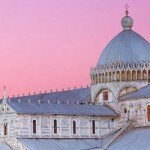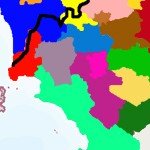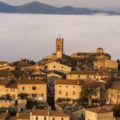The Christmas holidays are over and instead of taking a break from all the panforte, ricciarelli and panettone, we have already started to wonder where we can possibly have written down that excellent recipe for “cenci“, “zeppole” and other delicious fried sweets typical of Carnival in Tuscany. It certainly needs remarkable will power to keep eating like this!
Carnival is almost here. For the very few of you who might not have any idea what carnival is about, I’ll just say that it an “extended Halloween without the dark side of it”!
Carnival is mostly celebrated in countries with a long Christian (mainly Catholic) tradition, even though its roots are believed to be in the Greek Dionysia and the Roman Saturnalia, when it was an occasion to subvert order, to have fun and even for debauchery.
I’m not sure about debauchery today, but what certainly happens is that people dress up in costumes and join in masquerades, street and private parties. Most cities, towns and villages organize parades, which in some cases have become world-known events. The Carnival of Venice and the Carnival of Viareggio are two well-known examples.
The word carnival probably comes from the Latin expression “carnem levare“, which literally means to “eliminate meat“. The celebrations took place before Lent, a period of fasting which precedes Easter, during which believers are supposed to get ready, through prayer, penitence and alms-giving, for the commemoration of the Passion of Christ celebrated during the Holy Week and culminating in the Easter celebrations for the Resurrection of Jesus.
The most important days are giovedì and martedì grasso (Mardi Gras), the last Thursday and Tuesday before Ash Wednesday (mercoledì delle ceneri). Mardi gras generally marks the end of carnival and the beginning of Lent. In some areas though, such as in Milan, where the Ambrosian Carnival is celebrated, the last celebration is on the Saturday after Ash Wednesday.
In Italy, the Carnival of Venice and the Carnival of Viareggio are the most popular events. (I don’t know much about the former, but here is a lovely blog post on the Carnival of Venice written by Monica Cesarato, a lovely lady from the city who teaches Italian and runs a great B&B in Venice).
The Carnival of Viareggio, in the province of Lucca in Tuscany, is famous for the parade of floats and masks taking place on the Lungomare, the street that runs along the waterfront. The large figures on the pageants are made of paper-pulp and are caricatures of famous people, generally politicians, showmen and sportsmen.
In Tuscany, the tradition of carnival floats and pageants is ancient. In the 15th and 16th century, the Medici family already organized big carnival parades like this, and Lorenzo de’ Medici himself wrote some “canti carnascialeschi“, literally “carnival songs“, very popular in Renaissance Florence. The most popular one is called “Il Trionfo di Bacco e Arianna“, and the two most popular lines sum up the philosophy of fine living I believe!
Quant’è bella giovinezza,
che si fugge tuttavia!
chi vuol esser lieto, sia:
di doman non c’è certezza.
Though they’re all the joy we know,
youth and beauty don’t endure.
If you want, be happy now;
for tomorrow’s never sure.
So if you are planning on visiting Tuscany in February, you should not miss Carnevale di Viareggio. The town itself is very nice, with many art nouveau buildings, and a lot of locals, bars, pubs and restaurants.
Carnival this year begins on January 30, but the parades will start on Sunday, January 31 at 3pm and then the schedule is:
- Sunday, February 7 at 3pm
- Sunday, February 14 at 3pm
- Tuesday (Mardi Gras) on February 16 at 2pm
- Sunday, February 21 at 5pm
On Saturdays, between January 30 and February 21st, there are concerts and other events organized in Piazza Mazzini after 4pm. In addition, every neighbourhood in Viareggio organizes its own street party. Here is a list of the Carnival Parties in Viareggio and surroundings.
Carnival has its special sweets too. In Tuscany the most typical of all carnival desserts, mainly fried stuff, are “cenci” or as they are known in the Siena and Grosseto area, “crogetti“, fried pastry topped with pastry cream or honey and icing sugar. In some areas they are called “chiacchiere“. Where I come from, there is a difference. “Crogetti” are rectangular pieces of thin fried pastry dough, whereas “chiacchiere” are long strips of thicker pasta, rolled up and fried, and sprinkled with icing sugar and sometimes alchermes. Bomboloni, or doughnuts, are also very popular, and so are zeppole, small doughnuts filled with pastry cream.
Looking for a place to stay while visiting Tuscany for the Carnevale di Viareggio?
Stay at our self-catering apartment in Pisa! It’s only a short train ride to Viareggio, and no need to rent a car!











I almost forgot the Carnival celebration that’s closest to my home village! Follonica Carnival!